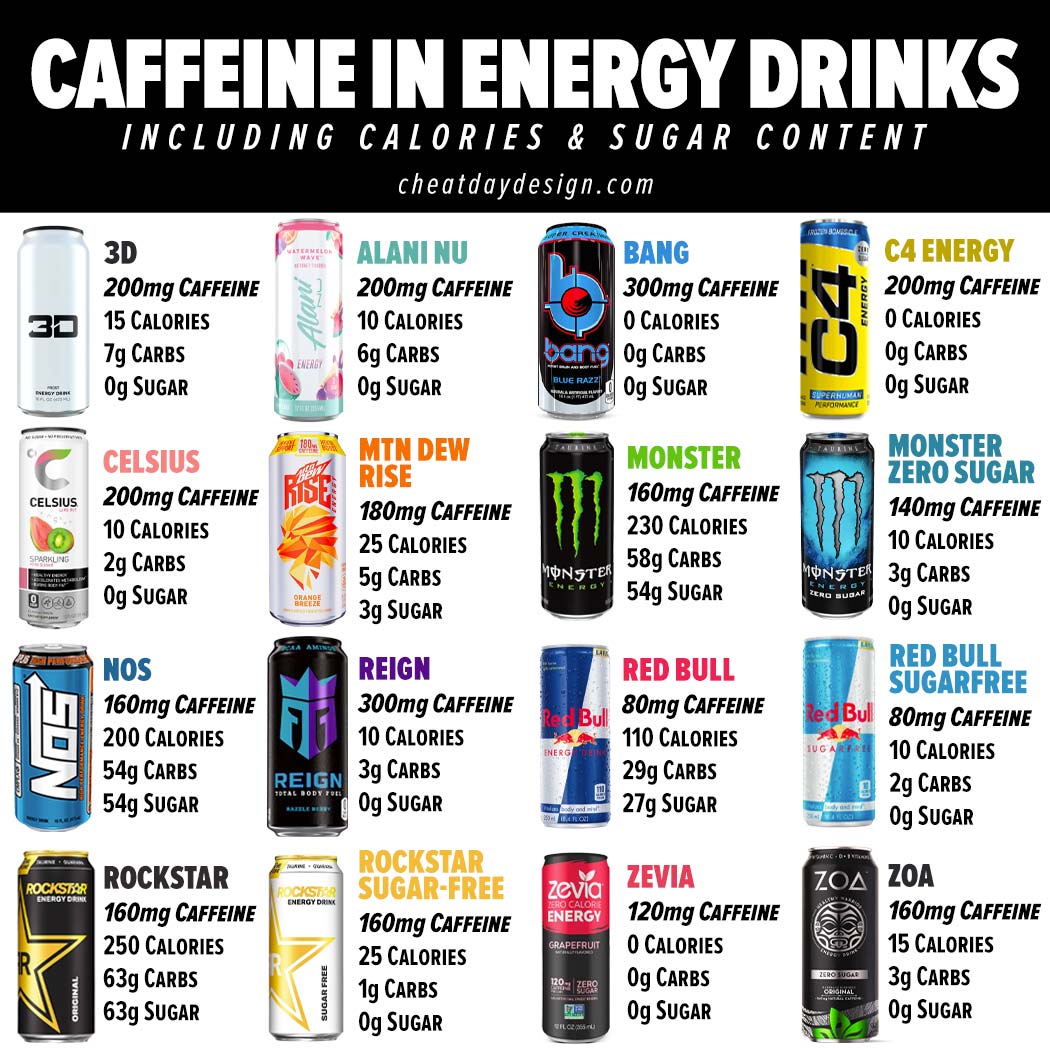
As with any food or beverage, the key to a healthy consumption level is all about moderation.Īll energy drinks in Australia have a label that recommends a maximum energy drink intake of 2 x 250mL or 1 x 500mL. Just like coffee, there’s a limit to what people should consume and this varies from person to person. This means the majority of energy drinks contain the same, or lower levels of caffeine as a cup of instant coffee, and less than half the levels found in a standard espresso.įor example, a standard 250mL energy drink has 80mg of caffeine, and a standard cappuccino contains an average of 160mg of caffeine. Energy drinks can have no more than 32mg of caffeine per 100mL. The amount of caffeine in energy drinks is strictly regulated by the Australian Government. How Much Caffeine Does an Energy Drink Contain? In Australia, a 250ml can of an energy drink contains 80mg of caffeine, which is equivalent to the amount of caffeine in a 250mL cup of instant coffee.Įnergy drinks are popular around the world and can be found in more than 165 countries. Labels of energy drinks do not promote the mixing of energy drinks with any other beverage.įrequently Asked Questions What is an Energy Drink?Īn energy drink is a popular non-alcoholic drink that includes caffeine and may contain other ingredients such as taurine and B vitamins, ginseng and guarana.No promotional activities are undertaken that encourage excessive consumption of energy drinks.

Marketing and advertising activities of energy drinks are not directed at children.Energy drinks are not made available in primary nor secondary schools.The energy drinks industry supports a responsible commitment to the manufacture, marketing and consumption of its products.
#Caffeinated drinks code#
Compliance with the Food Standards Code is mandatory for all energy drink manufacturers and if they breach the code, they may be fined or prosecuted by the government enforcement agency. The Food Standards Code is legally binding. Other caffeinated beverages, like espresso coffee from a cafe, or instant coffee, are not regulated by Food Standard 2.6.4. Labelling of energy drinks are at the forefront of consumer information with regards to other caffeine containing products and Australia’s labelling is some of the strictest in the world. The standard requires that energy drinks contain no more than 32mg of caffeine per 100mL and are clearly labelled with advisory statements. The Food Standards Code has specific rules for permitted ingredients and labelling.Įnergy drinks have their own special food standard within the Food Standards Code, Food Standard 2.6.4 - Formulated Caffeinated Beverages. Energy Drink RegulationĮnergy drinks are an approved category, so they are legally considered “food” and must comply with the Australia New Zealand Food Standards Code. In addition, in 2009 the European Food Safety Authority concluded that both Taurine and D-glucurono-lactone posed no risk to human health. Some, like pantothenic acid, contribute to mental performance. The vitamins and micro-nutrients in energy drinks, such as B12, B6 or niacin are commonly found in many foods, such as meat, poultry, cereals, eggs, cheese, green and leafy vegetables, nuts and fruits, amongst many others.ī vitamins have been known to contribute to the metabolism of carbohydrates, reducing fatigue and tiredness. This can be 2 x 250mL cans or 1 x 500mL can (or bottle equivalent).

Australian energy drink manufacturers include a daily maximum usage of 500mls on their labels. When it comes to consuming energy drinks, it’s all about moderation. All ingredients used in energy drinks are approved for use by Food Standards Australia New Zealand (FSANZ). The Australian energy drinks market is the most regulated in the world.


 0 kommentar(er)
0 kommentar(er)
